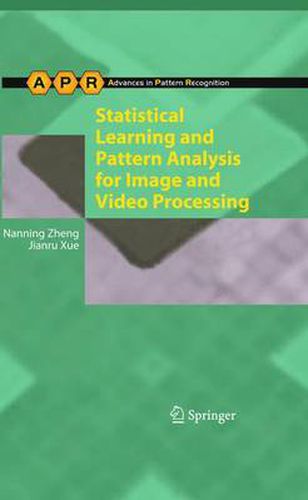Readings Newsletter
Become a Readings Member to make your shopping experience even easier.
Sign in or sign up for free!
You’re not far away from qualifying for FREE standard shipping within Australia
You’ve qualified for FREE standard shipping within Australia
The cart is loading…






This title is printed to order. This book may have been self-published. If so, we cannot guarantee the quality of the content. In the main most books will have gone through the editing process however some may not. We therefore suggest that you be aware of this before ordering this book. If in doubt check either the author or publisher’s details as we are unable to accept any returns unless they are faulty. Please contact us if you have any questions.
Why are We Writing This Book? Visual data (graphical, image, video, and visualized data) affect every aspect of modern society. The cheap collection, storage, and transmission of vast amounts of visual data have revolutionized the practice of science, technology, and business. Innovations from various disciplines have been developed and applied to the task of designing intelligent machines that can automatically detect and exploit useful regularities (patterns) in visual data. One such approach to machine intelligence is statistical learning and pattern analysis for visual data. Over the past two decades, rapid advances have been made throughout the ?eld of visual pattern analysis. Some fundamental problems, including perceptual gro- ing,imagesegmentation, stereomatching, objectdetectionandrecognition,and- tion analysis and visual tracking, have become hot research topics and test beds in multiple areas of specialization, including mathematics, neuron-biometry, and c- nition. A great diversity of models and algorithms stemming from these disciplines has been proposed. To address the issues of ill-posed problems and uncertainties in visual pattern modeling and computing, researchers have developed rich toolkits based on pattern analysis theory, harmonic analysis and partial differential eq- tions, geometry and group theory, graph matching, and graph grammars. Among these technologies involved in intelligent visual information processing, statistical learning and pattern analysis is undoubtedly the most popular and imp- tant approach, and it is also one of the most rapidly developing ?elds, with many achievements in recent years. Above all, it provides a unifying theoretical fra- work for intelligent visual information processing applications.
$9.00 standard shipping within Australia
FREE standard shipping within Australia for orders over $100.00
Express & International shipping calculated at checkout
This title is printed to order. This book may have been self-published. If so, we cannot guarantee the quality of the content. In the main most books will have gone through the editing process however some may not. We therefore suggest that you be aware of this before ordering this book. If in doubt check either the author or publisher’s details as we are unable to accept any returns unless they are faulty. Please contact us if you have any questions.
Why are We Writing This Book? Visual data (graphical, image, video, and visualized data) affect every aspect of modern society. The cheap collection, storage, and transmission of vast amounts of visual data have revolutionized the practice of science, technology, and business. Innovations from various disciplines have been developed and applied to the task of designing intelligent machines that can automatically detect and exploit useful regularities (patterns) in visual data. One such approach to machine intelligence is statistical learning and pattern analysis for visual data. Over the past two decades, rapid advances have been made throughout the ?eld of visual pattern analysis. Some fundamental problems, including perceptual gro- ing,imagesegmentation, stereomatching, objectdetectionandrecognition,and- tion analysis and visual tracking, have become hot research topics and test beds in multiple areas of specialization, including mathematics, neuron-biometry, and c- nition. A great diversity of models and algorithms stemming from these disciplines has been proposed. To address the issues of ill-posed problems and uncertainties in visual pattern modeling and computing, researchers have developed rich toolkits based on pattern analysis theory, harmonic analysis and partial differential eq- tions, geometry and group theory, graph matching, and graph grammars. Among these technologies involved in intelligent visual information processing, statistical learning and pattern analysis is undoubtedly the most popular and imp- tant approach, and it is also one of the most rapidly developing ?elds, with many achievements in recent years. Above all, it provides a unifying theoretical fra- work for intelligent visual information processing applications.